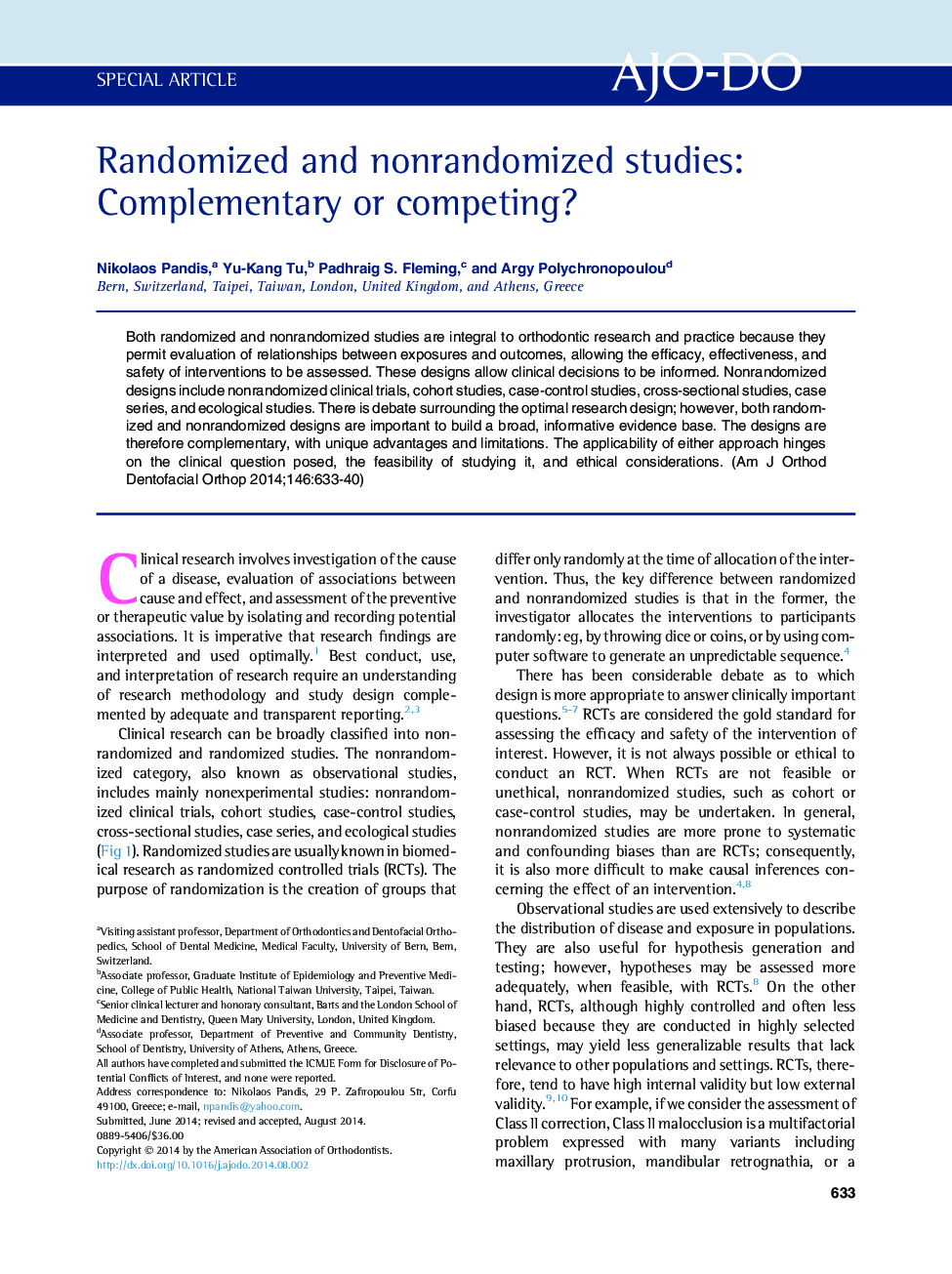| Article ID | Journal | Published Year | Pages | File Type |
|---|---|---|---|---|
| 3116245 | American Journal of Orthodontics and Dentofacial Orthopedics | 2014 | 8 Pages |
Both randomized and nonrandomized studies are integral to orthodontic research and practice because they permit evaluation of relationships between exposures and outcomes, allowing the efficacy, effectiveness, and safety of interventions to be assessed. These designs allow clinical decisions to be informed. Nonrandomized designs include nonrandomized clinical trials, cohort studies, case-control studies, cross-sectional studies, case series, and ecological studies. There is debate surrounding the optimal research design; however, both randomized and nonrandomized designs are important to build a broad, informative evidence base. The designs are therefore complementary, with unique advantages and limitations. The applicability of either approach hinges on the clinical question posed, the feasibility of studying it, and ethical considerations.
